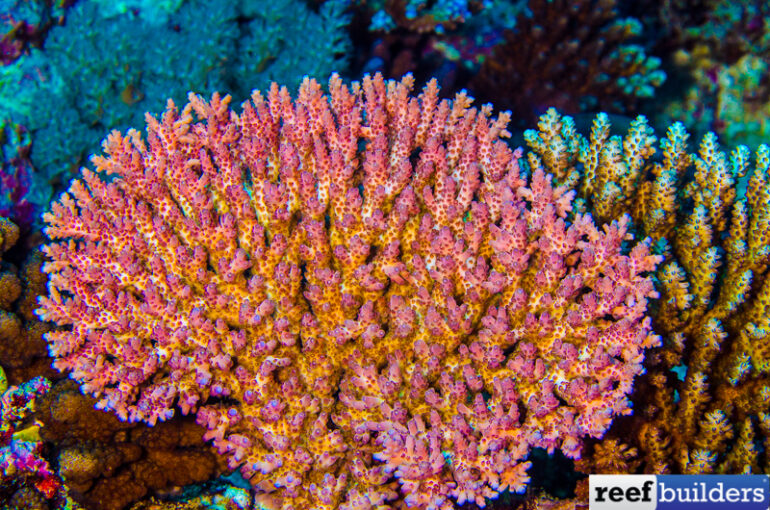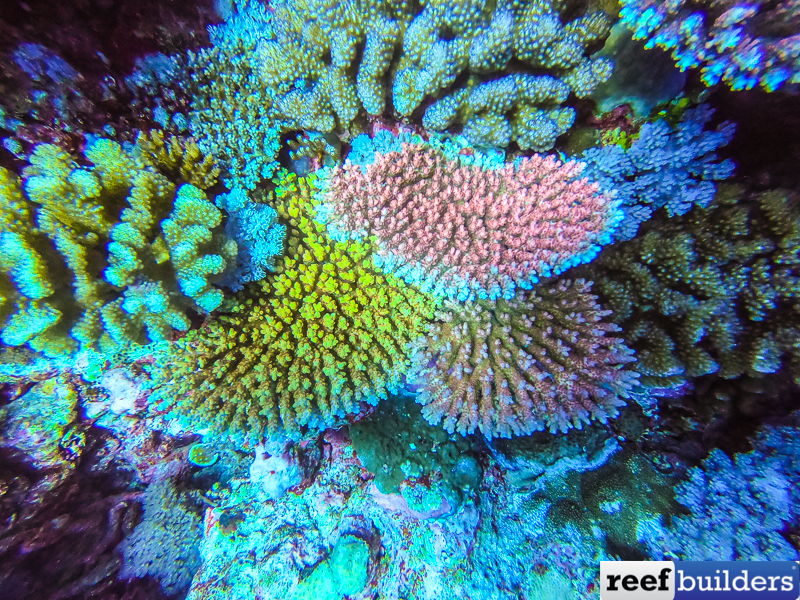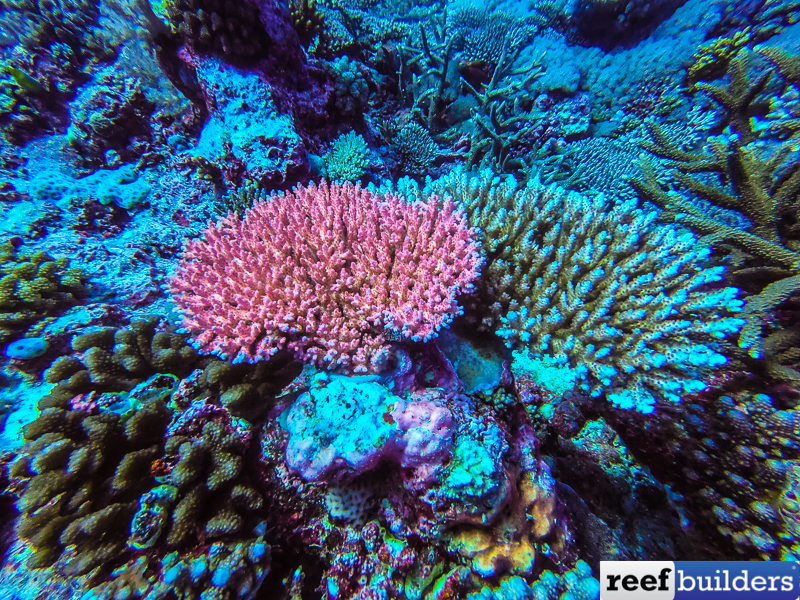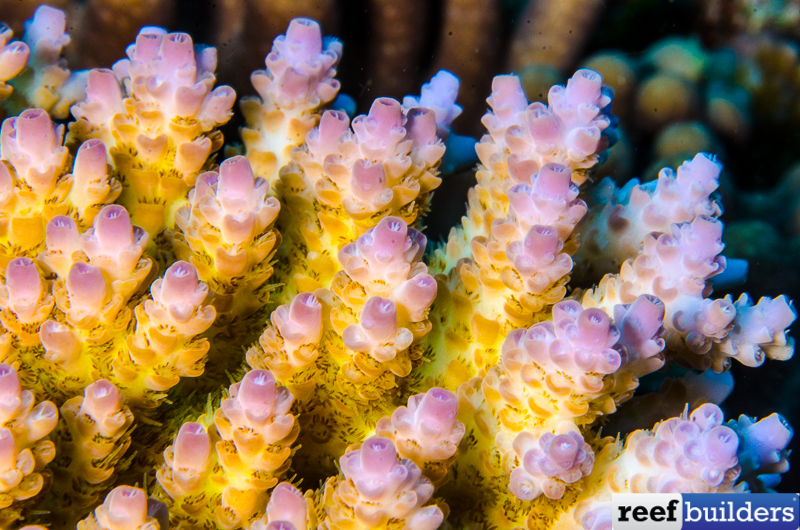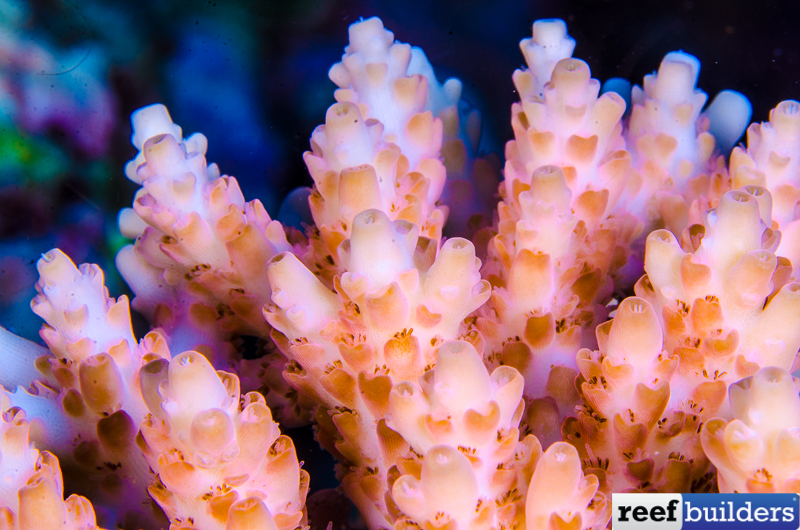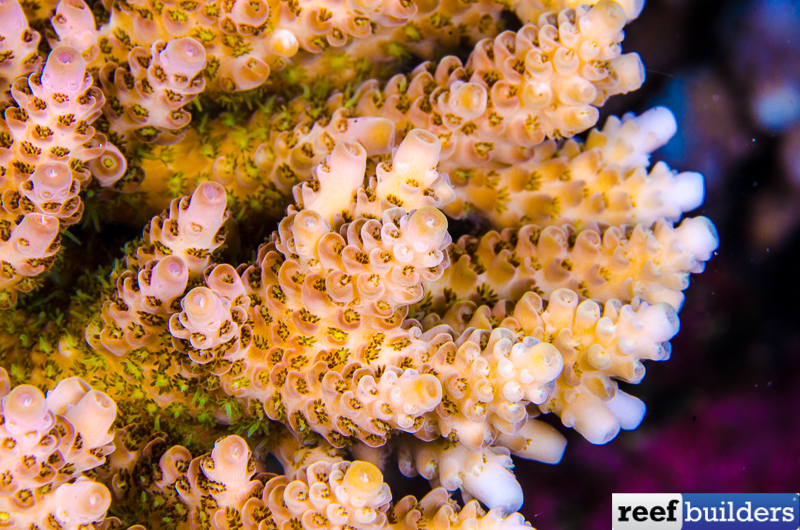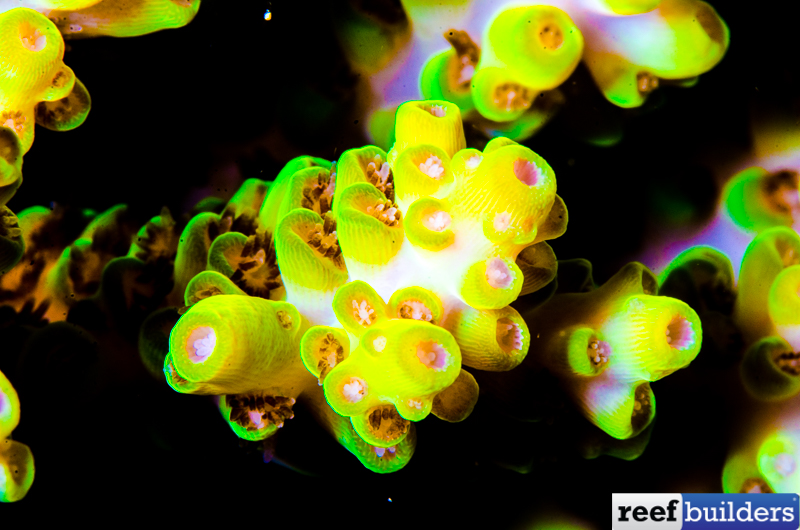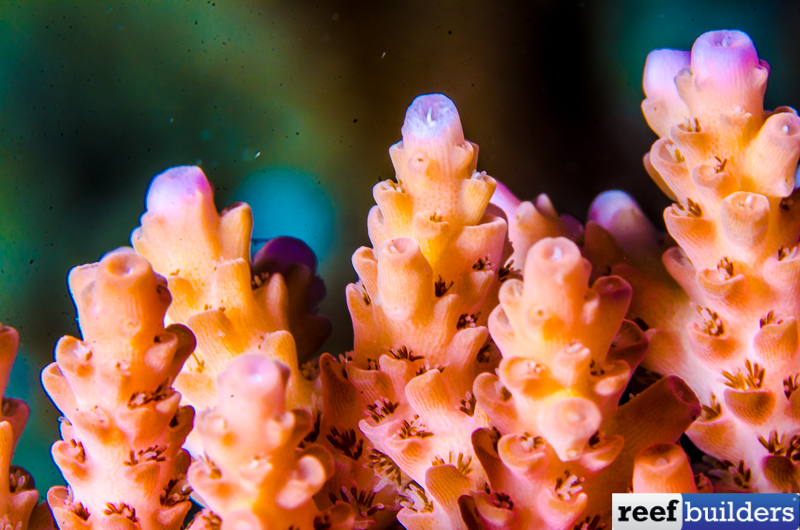When we think about Aussie Acros, there are quite a few that come to our mind before Acropora anthocercis. But actually this species is a very popular Acropora, almost as common in the trade as the Spathulatas or Strawberry Shortcake. The combination of a thin plate colony shape, with the brightest, pastel coloration makes this species a favorite of all aquarist but like a real tabling Acro, it’s not the easiest species to keep; Its natural environment is one of the most challenging one to live in, but also for us to replicate.
Prime Real Estate:
A. anthocercis favor one of the most valuable and sought after real estate available on the reef where the competition to find a bit of light and food is so intense, there are not much food left for the fish. Acropora hyacinthus is the lord of this land but some other species thrive in between.
A. anthocercis is abundant on the hard line, this line of submerged reef outside of the Great Barrier Reef, a long way from shore. While the Strawberry Shortcake, A. microclados, is abundant there in the shallows, A. anthocercis prefers the deeper part, below 12 m (35 ft). But as the water is perfectly gin clear, light is still very intense in these moderate depth.

In this area the huge oceanic swells pound the tops of the outer reef, giving water a complete oxygen therapy. High oxygen push the pH and many other parameters up, resulting in very high water quality.
When the tides goes out, the back eddy it creates stirs up the leftover food that passed through the billions of coral mouths before, hits this small reef front portion. and all the corals are lining down the slope to get a chance to catch their share.
Competition is high in this particular environment , and A. hyacinthus is the dominant species all along the slope. smaller colonies of A. anthocercis fill the gaps very well in between bigger A. hyacinthus and A. microclados.
A very particular species:
Colonies are thick, corymbose, often side attached plates.
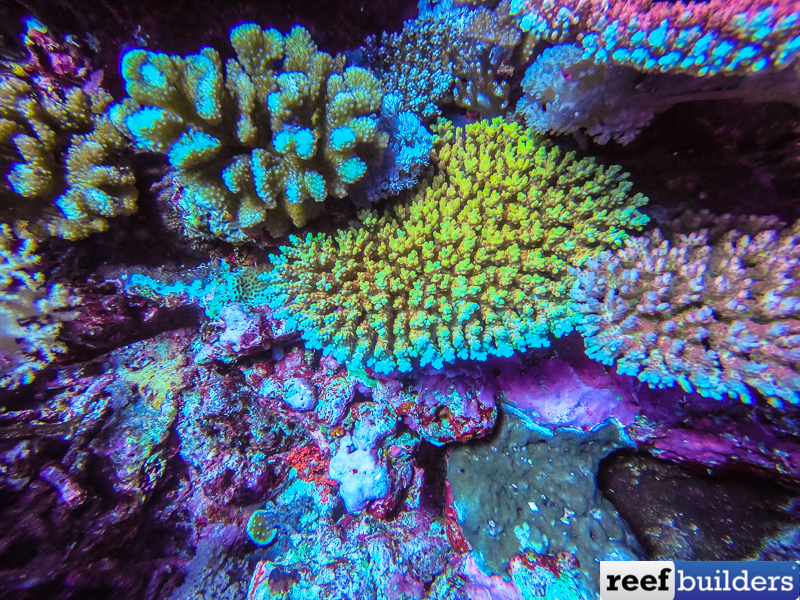
Branchlets of Acropora anthocercis are thick and short with abundant axial corallites are incipient, tubular and obvious often with several per branchlet, a defining characteristic of the species. The rosette arrangement of small, thick, flaring, pocket shape, appressed radial corallite is very particular and helps to distinguish this half tabling half pillow shaped staghorn coral.
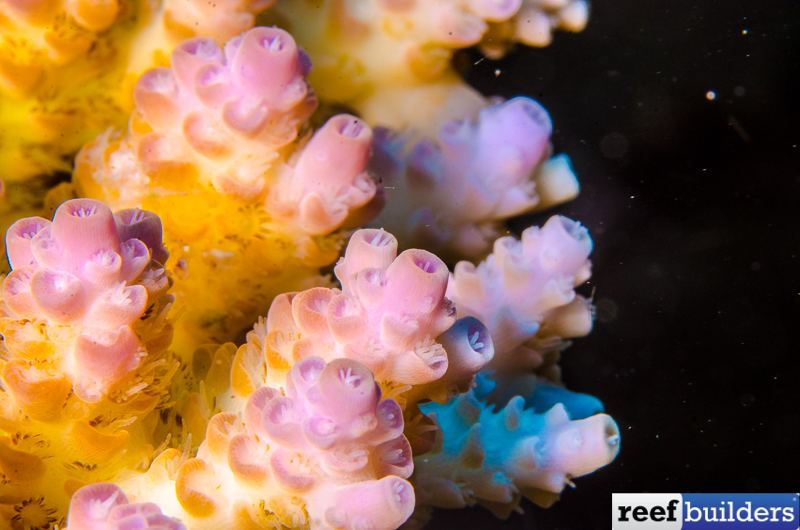
An optimal maintenance:
The very particular environment of this high energy SPS Coral species leaves very little room for error. It needs very heavy lighting, copious water motion, and perfect water quality to hold and display its low nutrient, outer reef colors. While this species will grow in a ‘basic’ SPS tank, for best coloration and growth will only be achievable to the very experienced aquarist, with flawless maintenance.
Discipline maintenance and the lowest levels of Phosphates and Nitrates are a prime condition to their optimal maintenance, and get the best possible coloration. Getting this kind of quality is quite challenging, and the problem with this species, is that slightest drop will lead to misfortunes very quickly.
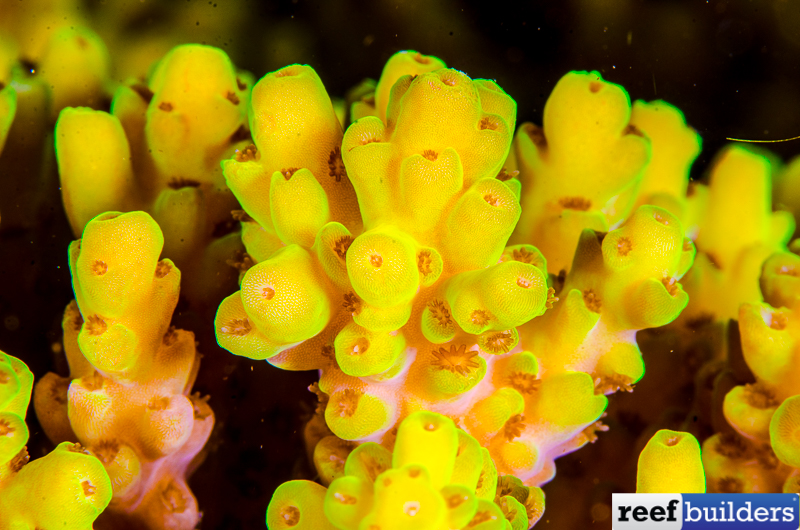
A plethora of colorations:
My favorite coloration of Acropora anthocercis is without doubt the variety which is mostly pink with green tentacles. But some of the yellow one are quite amazing too. Pink, and yellow are the main colorations, and some of them can get blue tips, especially, when another species is close to them, and tips start to fill up with nematocysts stinging cells.
Unfortunately, by the time colonies of Acropora anthocercis reach retail store, weeks and thousands of miles on the other side of the world, these corals have lost a lot of their coloration. But keep an eye out for this coral species because if the aquarium chemistry and conditions are optimal, they can regain it and reward the reef aquarist with an exquisite coral.


